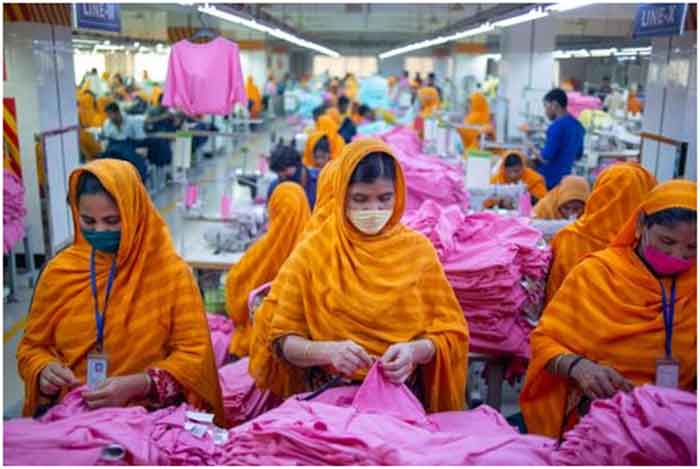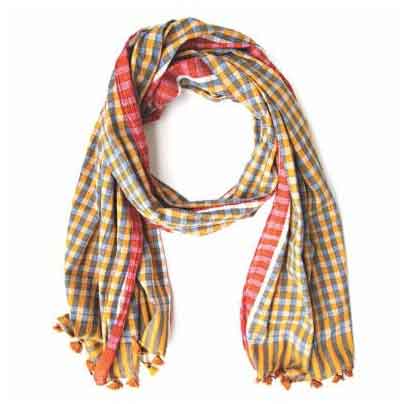
Along with everyone else, the fashion industry is also experiencing the effects of a global health crisis because of Covid-19. The $400 billion US fashion industry is in the middle of a huge crisis. The severe deterioration in fashion is having a serious impact on the global economy resulting in unemployment of millions of artisans, craftspeople, weavers, tailors and seamstresses to name a few. Though lockdown has been relaxed in many countries while coronavirus rages on, the future of the global fashion industry hangs in the balance. For millions around the world, fashion has changed as their homes are their headquarters for the unforeseeable future. As parts of the world are reopening, people are now unapologetically showing their sloppiness in terms of their clothing styles and grooming, and calling it “casual chic.” Since the beginning of April, clothing sales fell 79 percent in the United States. People simply are not getting dressed these days for work. A lot of people are working from home, and their wardrobe preference has changed. They are not investing on trendy clothes while working from home. Whether people are attending zoom sessions, conference calls or virtual court sessions, they are working in their casual attire.
This global pandemic is drastically changing the fashion world and the coronavirus crisis has upended the fashion trend in a major way. The longer we stay in this pandemic; our relationship with fashion will be changing and evolve into something more expressive personal style. To show up for work in the virtual world, people are dressing to appease themselves and not others. Many say why follow strict dress codes when you are not physically required to be in an office environment? Some tend to disagree by saying professional people have to dress well to present a respectable visual image. They have serious reservations against dressing freely or casually even when there is no front-facing interaction. There was a story in the New Yorker a few months back about a circuit judge in Florida. He got very irritated seeing attorneys attending virtual court hearings in pajamas or in T shirts from the comfort of their bedrooms. He sent a letter to all the local attorneys about the need for proper business attire during court proceedings. There are some exceptions though. A guy might wear a button-down shirt and a tie but would keep his boxers or pajama bottom on while attending a virtual meeting. I have actually seen people doing it. Most guys these days are dressing in sweatpants, T shirt, and baseball cap while working from home. They only will put on a pair of sneakers when taking the dog out for exercise, picking up groceries or getting a prescription filled by going to the drive-through window.
How about women? Gone are the days of women walking around in elegant and charming stiletto/pencil heels and bright colored lipsticks. A woman executive now might wear a jacket while in a conference call with her pajama bottom. Some are working from their bed and others do office work from under their blankets. They simply do not want to get up, get ready and hardly make it to their workstation.
Fashion now has become somewhat unisex and people are embracing the mix and match aesthetics. For creative people with a strong sense of style, mix and matching design style are not as hard to achieve as people used to think. The experts believe the trend will continue in the post-pandemic era. Sales of products including clothing have fell drastically since the pandemic started full force in mid-March. Under lockdown, most people’s concern is how to meet basic needs. People are not simply buying things now as before.
High demands for false eye lashes, mascara and other eyebrow products are up by 5 percent, according to market research firm NDP Group. Women are paying more attention to their eyes now as a way of expressing themselves as one’s half face is covered by a protective mask while in public. “It makes complete sense,” said Larissa Jensen, a beauty analyst for NPD. “When you have to go out and you’re wearing a protective face mask, those are the products that emphasize your ‘smize’ — your smiling eyes.” Sales of lip products, meanwhile, fell 5 percent in May. “After all, Jensen said, nobody wants lipstick smudges inside their masks.”
According to a December 5 article in the Elle magazine, famous fashion brands such as H & M and Zara have been cancelling orders in Bangladesh. The ready-made garment industry mainly serves Europe and USA. This sector brings 80 percent of the country’s export income. “Due to store closures and sale downturns, Forbes claims western fashion brands have cancelled over $2.8 (£2.26) billion in orders from Bangladeshi suppliers, potentially sparking a humanitarian crisis.”

“At least 1.2 million workers in Bangladesh are said to have been directly impacted by order cancellations, and of the thousands of factories and suppliers who have lost their contracts: ‘72.4% said they were unable to provide their workers with some income when furloughed (sent home temporarily), and 80.4% said they were unable to provide severance pay when order cancellations resulted in worker dismissals.’ Thankfully, campaigners have already successfully urged companies (such as H&M) to extend some sort of compensation to their suppliers, and there is hope more will follow.”
With the pandemic ravaging human lives, globally people have returned to basics in terms of clothing style and upkeep on a daily basis. Beauty salons and barbershops everywhere have been transformed by the global pandemic. People are relying on self-care in order to avoid intimate interaction as social distancing is the norm now because of extreme circumstances. The designers and sellers of products have been making grim predictions that when people return to work, fashion trends might not continue as before. With shopping malls opening and money being very tight in most families, people simply cannot afford to make impulsive purchases now. When a vaccine is available to the masses, and life returns to normal, the designers and retailers will have to rethink their conception about fashion and will have to come up with different strategies about making the consumers wanting to buy new things. Fashion might not reemerge as before by simply reversing to the pre-pandemic time. If there is a long-term shift in consumer outlook, when they choose between basics vs luxury – undoubtedly, it will affect the fashion industry in a major way. The fashion houses will have no choice but to meet high consumer demands. Consumers probably will be more focused on buying affordable and sustainable products that will reflect the latest trends.
How can one look more stylish at a lower price? The designers everywhere are still making seasonal fashion like they used to but now they are more fixated on making clothes using comfortable fabrics and by offering lower prices. As I am in the middle of choosing a few holiday outfits for my loved ones, my preferred shop J Jill’s winter catalog reflects the sign of the times in this particular hard period in history. Creative people can still look stylish by getting a handful of new things and style it with their existing clothes in unexpected color combinations and not max out their credit cards. At the end of the day, it’s about how you style it, not how much you had spent for your garments.
As coronavirus rages on, the fashion houses across Asia and Europe are being heavily impacted because of very low sales. Because of the financial strains, everyone’s priority has changed. If the pandemic continues in the foreseeable future, the designers will have to be more creative by simply making fashion affordable. I know that the desire for fashionable clothes has not been totally extinguished. We simply cannot spend money now to soothe our inner need to change our wardrobe nonstop.
Fashion designers in developing countries are not too far behind in terms of coming up with innovative ideas to stay afloat during this crisis time. A fashion house in Dhaka, Bangladesh named Bibi Productions is selling a lot of handmade things made from all natural products that consumers can order online. Bibi’s line include essentials such as saree, face mask, washable backpack, scarves made with gamcha material (a traditional thin, coarse cotton towel, often with checked design, found in South Asian countries such as India, Pakistan and Bangladesh).

A scarf made in gamcha style
Indian weavers were enthused by PM Narendra Modi’s gamcha face mask and it boosted e-commerce and employment in Kanpur. “Inspired by the captivating red and white ‘gamcha’ that Prime Minister Narendra Modi used as a face mask during his address to the nation while announcing lockdown 2.0, handloom weavers in Uttar Pradesh’s Baranbaki have got themselves busy. The demand for this traditional piece of clothing has zoomed,” reported the Business Standard.
Since lockdown is somewhat relaxed now, in a lot of the countries the fashion houses and famous designers have enlisted celebrities to promote their more affordable clothes. Purchasing a designer number is out of the question for almost everyone now-a-days. So the fashion houses are finding creative ways to make fashion inexpensive for middle-income families. They are trying to persuade the consumers to buy something new by making bold statements through their celebrity recruits. As some of the big name department stores are facing bankruptcy, these celebrities are urging the public to keep fashion afloat.
Once people re-emerge back into the world and resume their previous lifestyles, the guess is: fashion and style will not bounce back to a similar nature of what it was before. Designers have to create gorgeous clothes for a pragmatic wardrobe. We will most possibly see more athletic wear and casual outfits for office goers. Now that people are more used to wearing casual attire, fashion simply will not go back to normal after the pandemic as emphasis will be on comfort rather than looking ridiculously expensive in designer outfits. When the world starts to recover from the severe economic downfall due to the pandemic, the designers will have a long wait to be able to entice people into buying high-end fashionable clothes. We will most definitely see a long term shift in consumer attitude in their preference of clothing, shoes and accessories. The overly priced haute couture designs shown on the runways of Paris, London, Milan, New York and Mumbai during fashion week will have to change with the times.
Zeenat Khan writes fiction, non-fiction, and newspaper columns. She is based in Maryland, USA but has very strong ties to her home country Bangladesh.
SIGN UP FOR COUNTERCURRENTS DAILY NEWSLETTER
 RSS Feed
RSS Feed















 December 9th, 2020
December 9th, 2020  Awake Goy
Awake Goy  Posted in
Posted in  Tags:
Tags: 













